Top 10 baits from West Point Lake
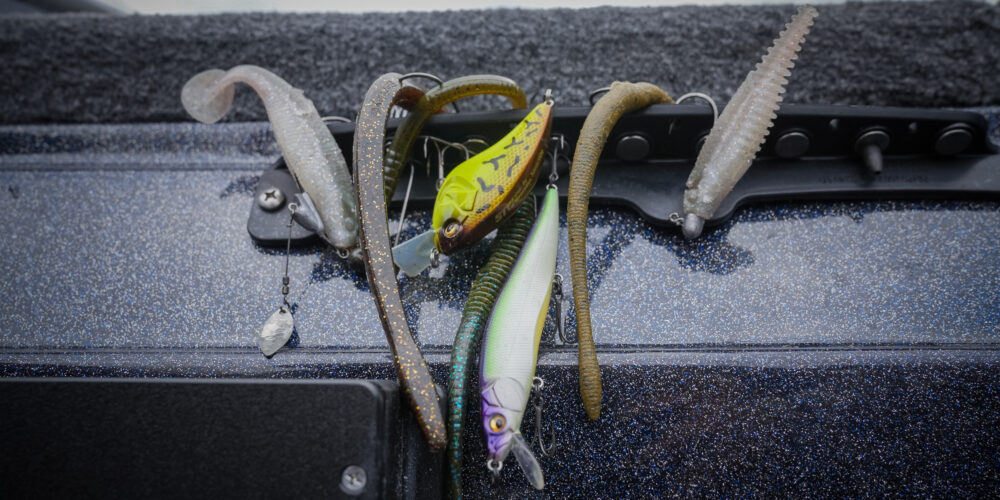
LaGRANGE, Ga. – Stop 2 Presented by Suzuki on West Point Lake turned out to be a great tournament, with multiple different ways to catch bass in play and a very close race for first place.
With largemouth and spotted bass (or Alabama bass, or some mix of them) both in play, plenty of fish got caught. Still, the top three all needed at least one big largemouth day to get there, and actually contending for the win with spotted bass turned out to be a very difficult task.
Here’s what worked best for the top Tackle Warehouse Invitationals pros.
1. Stewart wins with docks
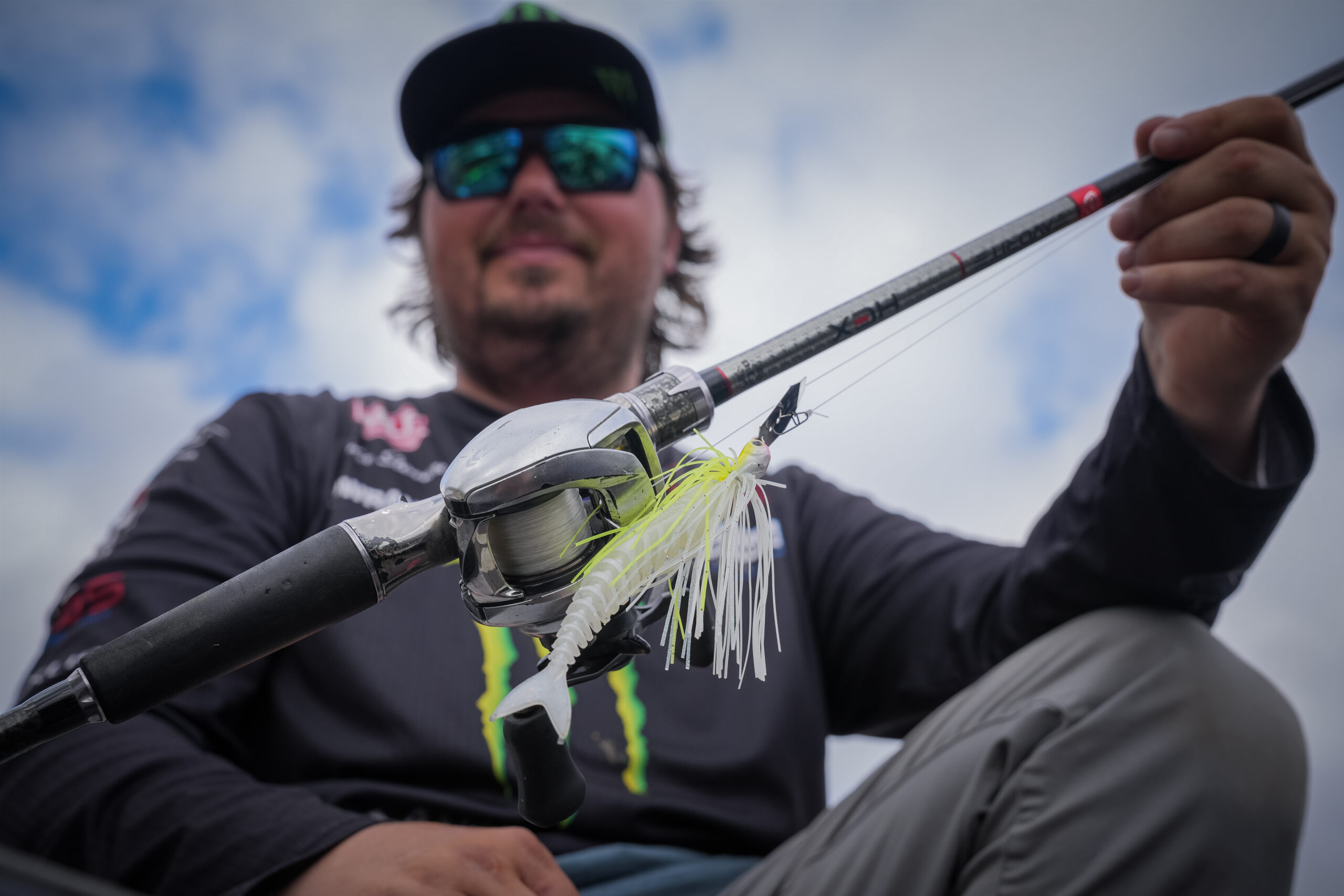
Catching the biggest bag of the event on Day 1, Tyler Stewart struggled on Day 2 and rebounded on Day 3 to earn the win.
The first day, he caught most of his weight off marina docks, and his kickers generally came on docks the rest of the way as well. For that, his bait of choice was a 1/2-ounce Z-Man Evergreen ChatterBait JackHammer with a Pro Point Machete Minnow, which he threw on a 7-foot, 5-inch, medium-heavy Favorite Hex rod with 17-pound P-Line Tactical.
Stewart also caught some spotted bass on a Carolina rig and flipped a tube for largemouth in laydowns.
2. ‘Scoping shallow wood almost puts Walters on top
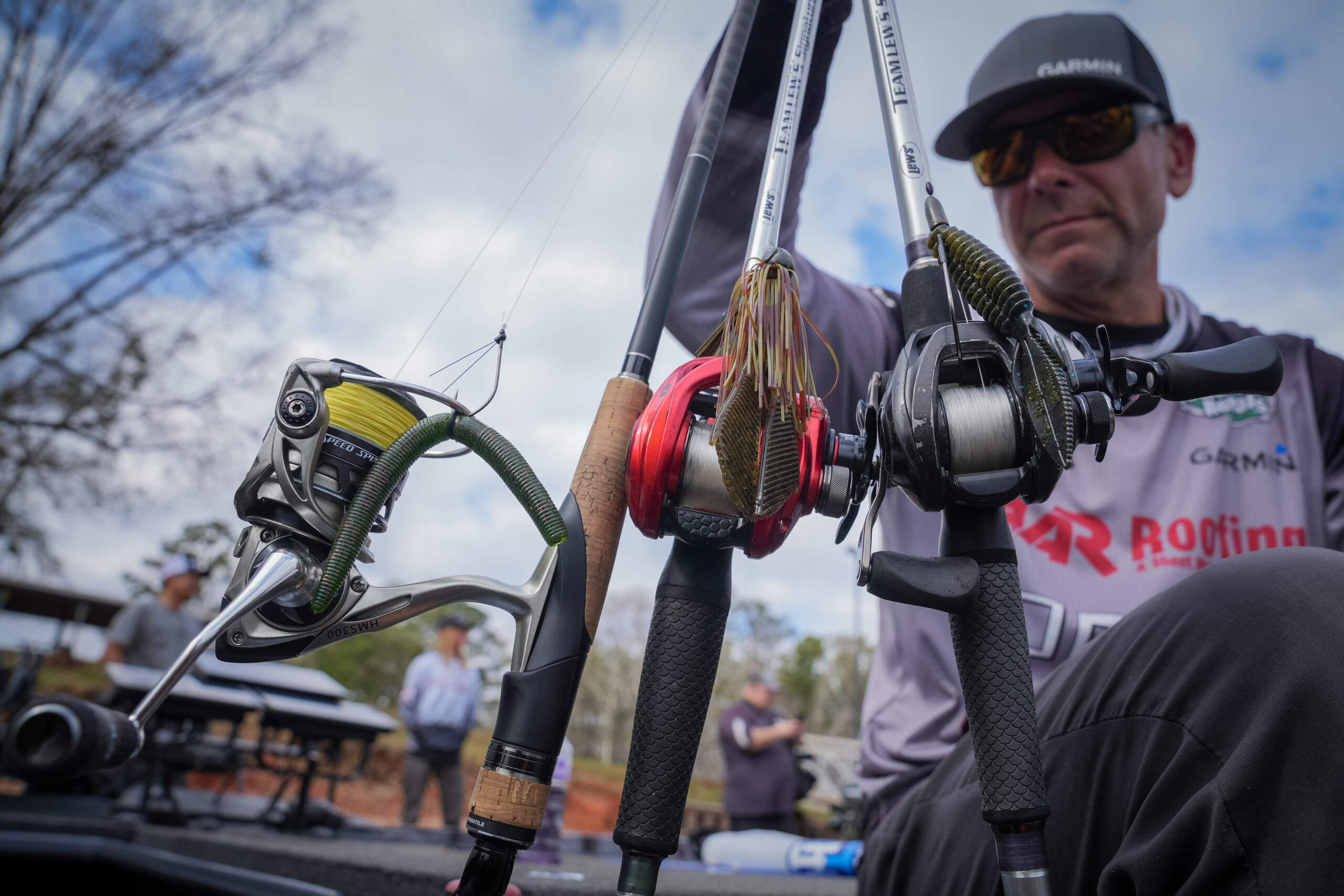
Leading after Day 2, Todd Walters slipped to second on the final day. While Stewart caught his big largemouth off docks and shallow wood, casting old-school, Walters focused on shallow wood and used his Garmin LiveScope to be as focused as possible.
“I focused on smaller pockets, because it changed every day,” Walters said. “So, I could go into a pocket, and break it down a lot quicker and replicate it as I moved around. Even though it got really cold and rainy and the temperature dropped, the fish were still there. The bait wasn’t there, but there was still a good amount of fish that stayed shallow. I caught fish in basically 1 foot of water to 8 feet of water – I think a lot of people dropped back too far. Those largemouth stayed shallow from what I found.”
Offseason work put Walters in position to have a good tournament.
“I was always shining a beam on ‘em, even in a foot of water,” he said. “I thought I was pretty good at LiveScope, until you see guys like Drew Gill and some of these other younger guys that are doing things with it that I wasn’t able to do. So, I spent my whole offseason figuring out how to not only see fish in open water, but to see fish in shallow cover. When Rob (Matsuura) was on me on Day 2, I almost called my shot, because I could see that 6-pounder – it was a like a lightbulb in the tree. I spent a lot of time in the offseason trying to see things that other people couldn’t see.”
A combination of Perspective Mode and Forward Mode helped Walters dial in his shallow approach.
“I was shining the whole time, in perspective and forward,” he said. “I can see more with perspective, but you can see more detail in forward. So, I look at perspective, once I find what I’m looking for, I hit pause, because they will interfere with each other, and then I’ll use forward to look at one specific piece of structure. I listened to Drew Gill’s podcast, and he’s right — if you frame it correctly, you can see a lot of things other people can’t.”
To catch his fish, Walters used a few baits, though he relied most on a homemade jig and a Texas rig. His whole spread included a 1/2-ounce white Strike King Thunder Cricket, a 1/4-ounce Texas rig with a tramp stamp Reaction Innovations Sweet Beaver, a 1/2-ounce jig with a Z-Man BatwingZ and a wacky and Neko-rigged 5-inch Yamamoto Senko. For his setups, he used Lew’s rods and reels and Sunline line.
With five wins at the Phoenix Bass Fishing League level and some real Toyota Series success, Walters is an accomplished angler. But, he was nearing the end of his rope at the Pro Circuit and Invitationals level, after four mostly unsuccessful years fishing nationally. So, finishing a close second didn’t disappoint him – he’s excited to see his work pay off.
“This changes everything; I am fired up, more than I ever have been in my entire life,” he said. “I can still do this. After all the hard work I’ve done the last three years, which is physically preparing to keep up with these guys, at the gym, doing yoga, and sacrificing so much over the last three years, something clicked. I feel like now I know how to practice better, prepare better, I’m going to take this momentum forward.”
3. Cranking rock keeps Hudson in the mix
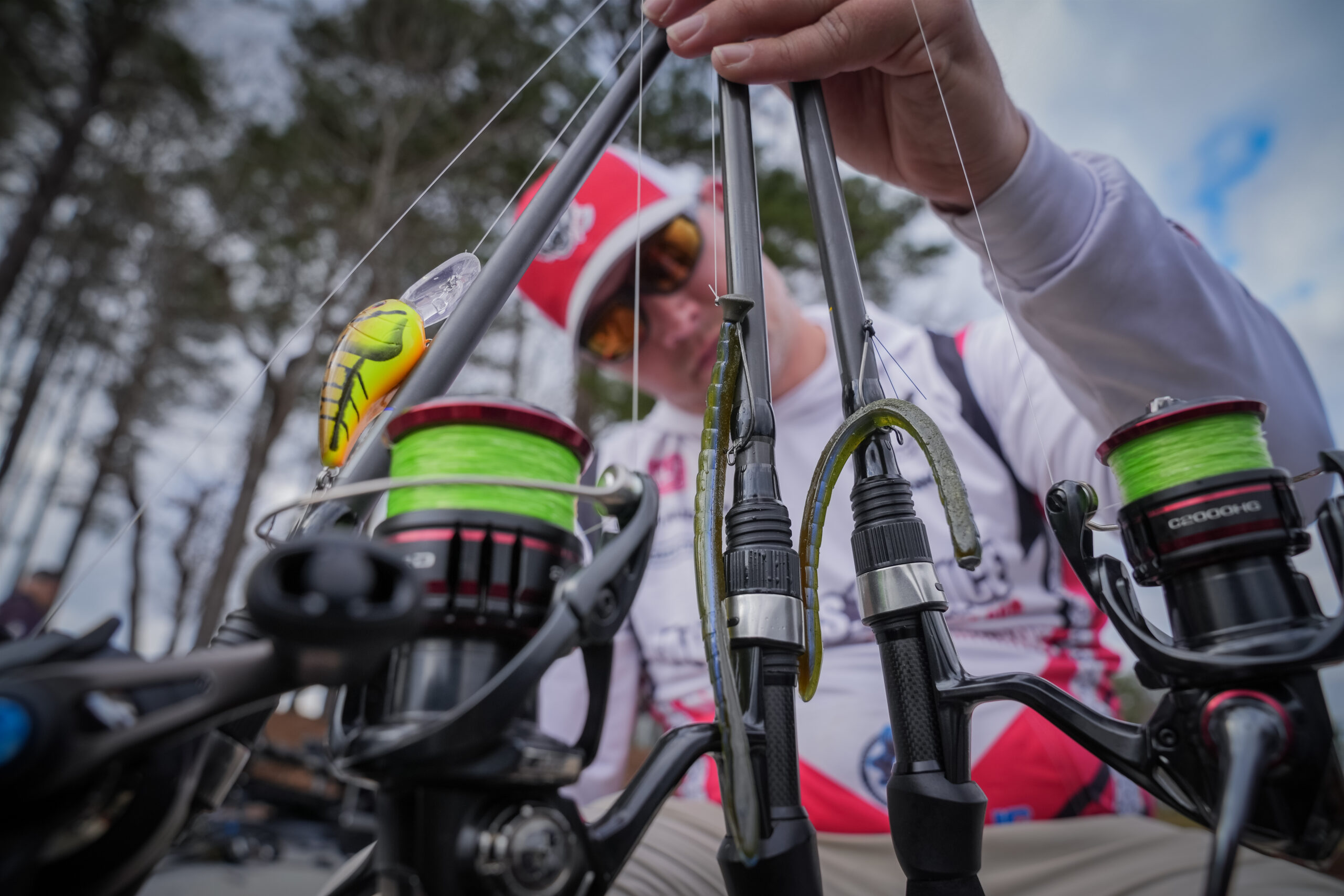
Derik Hudson rolled with a spotted bass pattern but ran into enough kicker largemouth throughout the event to stay in contention.
Cranking rocky points on the main lake south of Pyne Road Park, he used a SPRO RKCrawler 50, a SPRO RKCrawler 55 and a SPRO RKCrawler MD 55.
“I had six on the deck of the boat each day,” he said. “If the vein of rock was shallower or deeper, I would change the depth. If the sun was poking out, I would throw the 50, which was a little smaller. I jumped up to 15-pound Seaguar Tatsu — I was throwing lighter, and I broke one off in practice. I jumped up to the 15 and never broke off a single fish. I think that really helped.”
Additionally, Hudson slurped up fish on brush and other isolated targets with a 6-inch Missile Baits Magic Worm in watermelon violet on either a 3/16-ounce Gamakatsu Stand Up Alien Head or a Neko with a Gamakatsu G-Finesse Weedless Stinger and a 1/16-ounce weight. For all his presentations, he used Shimano reels and STIX rods.
4. Miller stays hot as a pistol
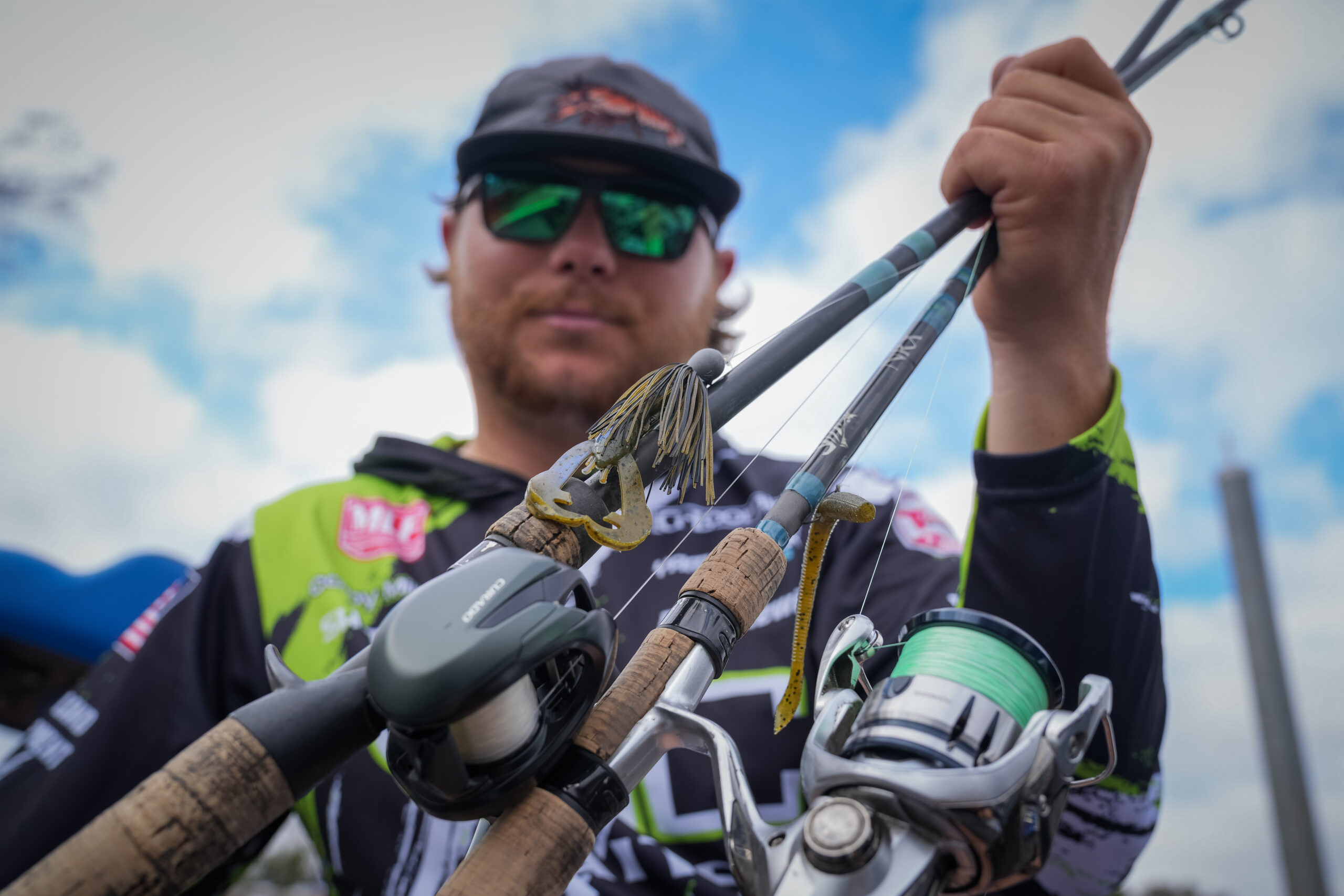
Coming off a win in the Toyota Series event on Sam Rayburn, Colby Miller knocked out 14 pounds a day in the opening rounds to put himself in the hunt for the win.
His two baits of choice were a 1/2-ounce Keitech Casting Jig with a Strike King Baby Rage Craw and a Neko (this was an all-time Neko derby if you haven’t realized by now) with a 3/32-ounce Epic Baits Nail Weight and either a 5- or 7.75-inch Yamamoto Kut Tail Worm.
“I had a couple shallow piles in like 3 to 7 foot, near spawning areas, and I was starting there early in the mornings, trying to pick off a few to get the day started,” Miller said. “The first two days it went as planned. The first day I think I caught a 3 1/2 in the first one, a 3 1/2 in the second, and then lost one in the third one. I was flipping a jig and a Neko around the brush. The brush was actually sticking out of the water in those areas.
“From there, I was done throwing the jig, and I’d strictly fish brush piles from 8 to 14 feet on points and secondary points leading into spawning areas.”
Starting the week with the big Kut Tail, he went to the smaller size as the fish got more pressure. For a leader, he used 10-pound Shimano Mastiff, and he said that color didn’t really matter, though his green pumpkin choices may have been marginally better than blacks and purples.
5. Shallow ‘Scoping pays again for Gill
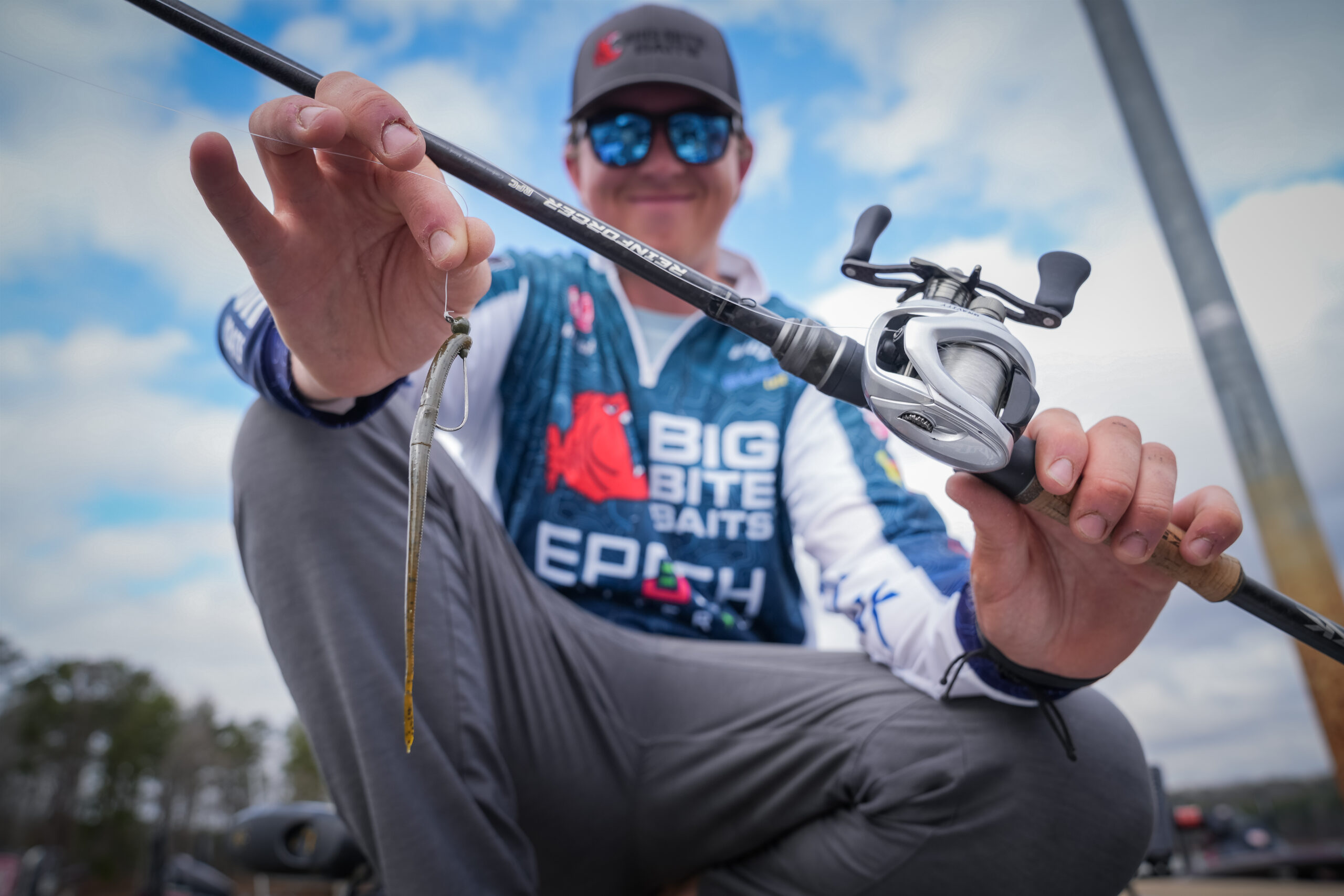
Continuing his reign of terror, Drew Gill ran the banks of West Point with a shaky head to amass his weight.
His primary bait was a green pumpkin Big Bite Baits Shaking Squirrel on a 1/8-ounce head. He threw it on a 7-foot, 6-inch Ark Reinforcer Series casting rod with an Ark Gravity 7 reel and 14-pound fluorocarbon.
“I was running main-lake gravel transition stretches and fishing isolated targets around them,” Gill said. “Small rock piles, single rocks, pieces of wood, random jon boats on the bottom, things like that. It was a very unique lake and a very fun tournament.”
6. Breeden runs a combo pattern
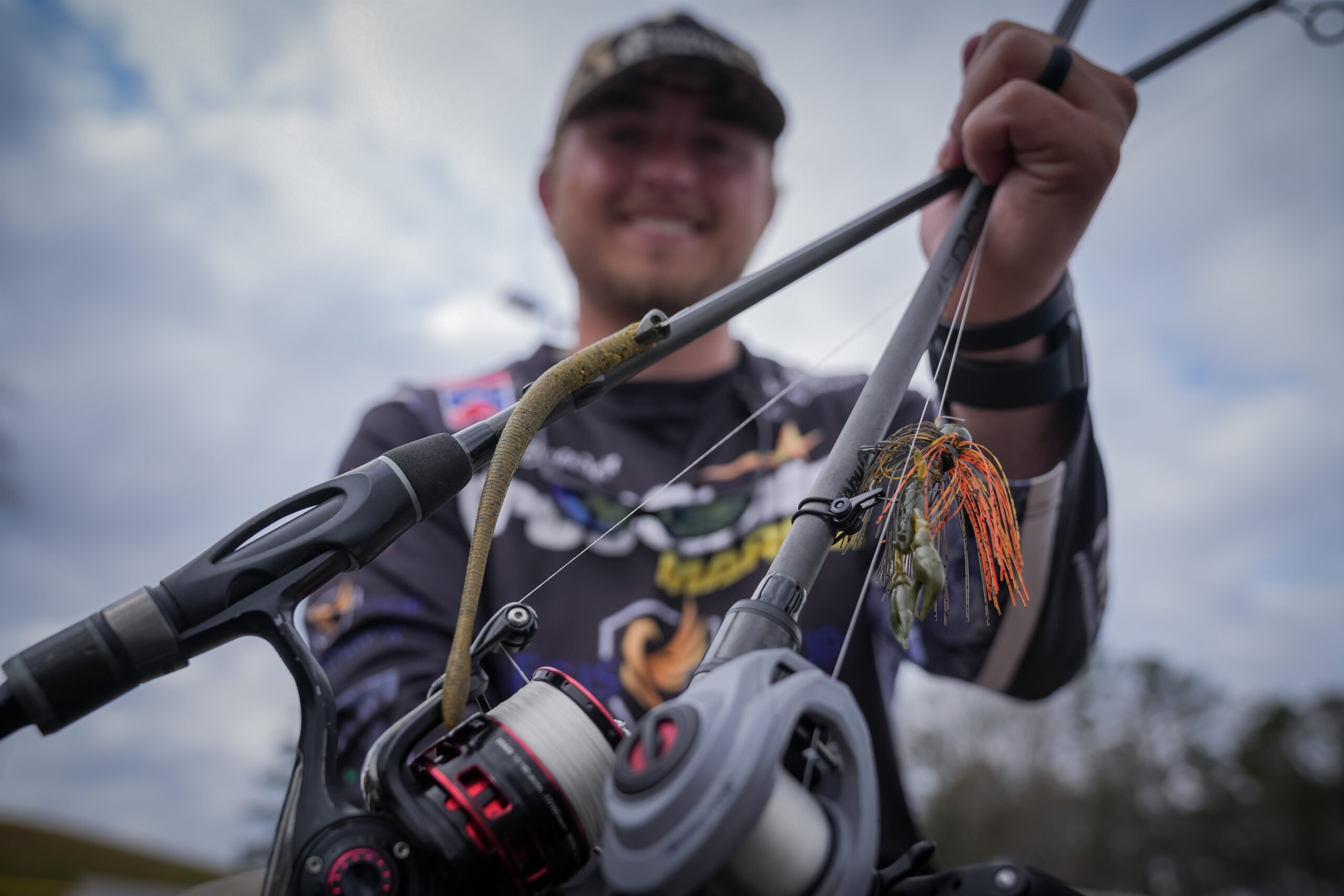
Cole Breeden knocked out a Top 10 running some brush and then adding to it as the event went on.
“My main gameplan was to fish brush in probably 5 to 12 feet,” he said. “Day 1, I had all spots, and I caught them fishing that shallow brush with a jig. The second day, I did the same thing, and I found a little sand drop and caught several keepers on it.”
He also added some qualify fish on Day 2 flipping laydowns with a Texas-rigged Berkley PowerBait MaxScent Creature Hawg.
“The third day, I caught all my fish on that sand drop I found on Day 2,” he said. “The top of it was 2 foot, and the bottom of it was 5 foot. There was a lot more current from the rain, and it put them right on the bottom on Day 3.”
Outside of the Texas rig, Breeden’s primary baits were a Berkley PowerBait MaxScent Hit Worm Magnum on a Picasso Rhino Head and a Picasso Little Spotty jig with a Berkley PowerBait The Champ Craw. He used Abu Garcia rods and reels and Berkley line.
7. Lawrence targets isolated cover
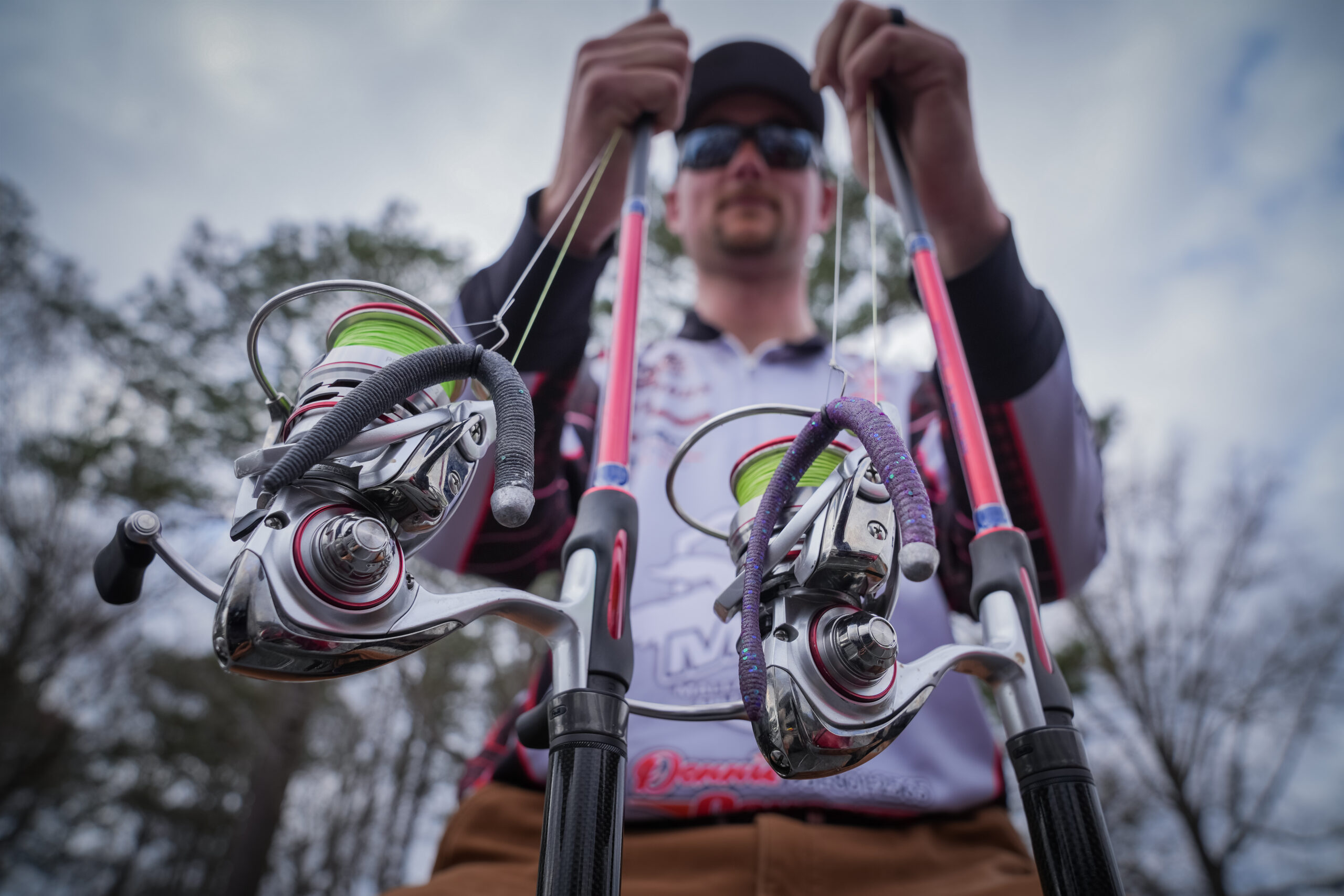
Running isolated cover with a Neko rig like a number of the other top finishers, Jake Lawrence made his home in the lower end of the lake.
His primary baits were a black Berkley PowerBait MaxScent The General and a Berkley PowerBait MaxScent Hit Worm Magnum. He rigged both with 1/8-ounce or 1/4-ounce nail weights and used a 1/0 Owner Jungle Wacky Weedless Hook. He used 7-foot, 2-inch Jenko High Roller spinning rods and 16-pound Sunline SX1 for his main line and a 15-pound fluorocarbon leader.
“I found, with the dirty water, the heavier the nail weight, the more bites I would get,” he said. “I think they could find it better; it was making more noise, being a little more aggressive. The pattern within the pattern was brush piles and isolated cover, rocks, or a few stumps. But the brush had to be laying flat on the bottom. I don’t know what those guys are doing over there when they’re laying that brush, but they’re flattening the brush. It’ll be a 10- to 20-foot long sapling, and somehow none of it sticks up more than 2 feet off the bottom. It makes it really hard to see, and I don’t know if the fish wanted to be in it more, or if it is that much harder for people to find and not being fished as much.”
The Neko with a 1/8-ounce weight was the heaviest bait he could use effectively in the brush. Around rock, he went with the 1/4-ounce nail weight.
8. Jig in brush was the way to go for Greene
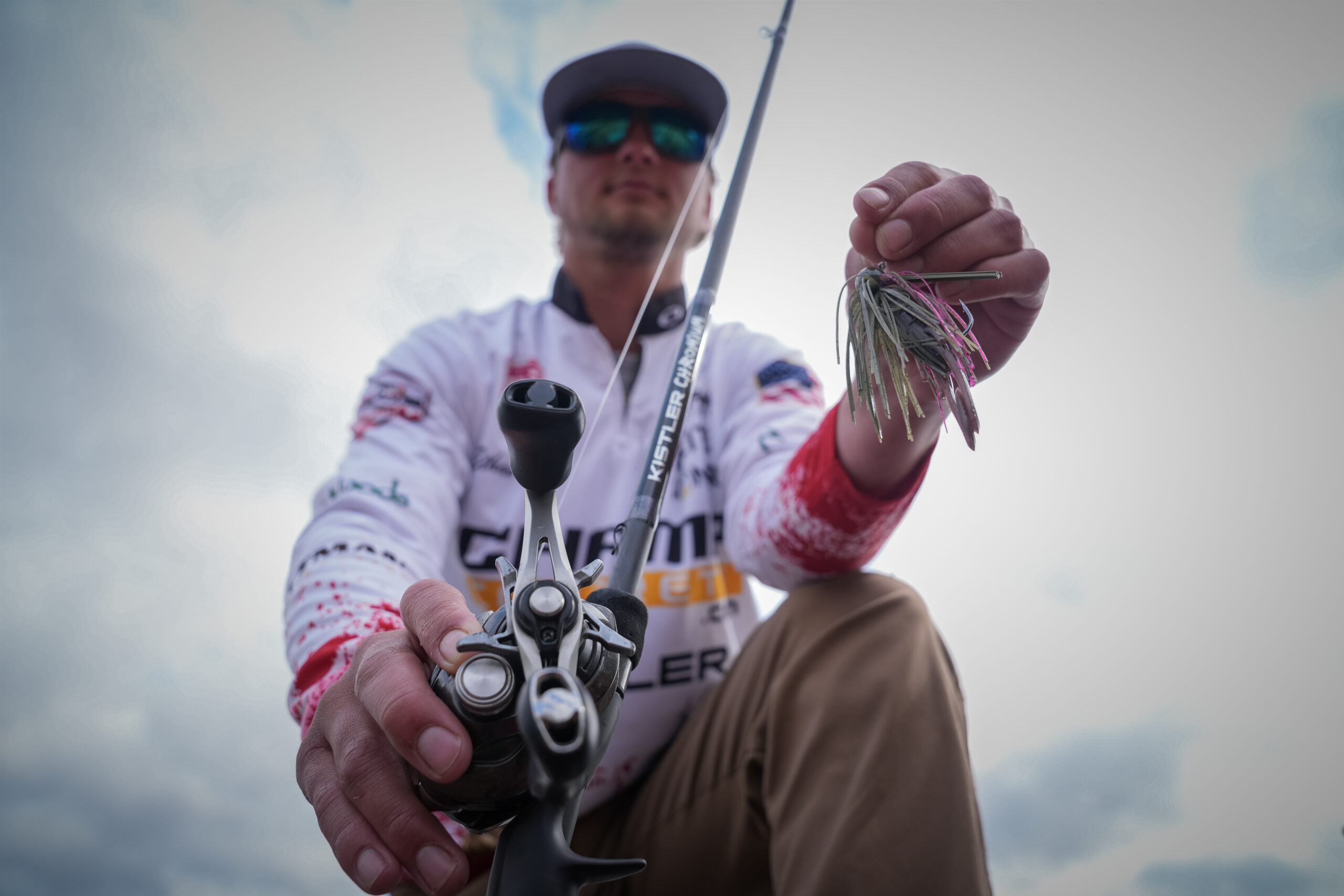
Sacking 20 pounds on Day 2, Ethan Greene rocketed into the Top 10 but couldn’t maintain it on Day 3.
Switching to fishing brush on points and humps in 12 to 20 feet on Day 2, that pattern fell apart as Championship Sunday brought different conditions.
“At the end of the tournament, I went back and looked at the generation and the water level and all that, wanting to know what exactly had changed to move those fish out of there, as good as they were in it on Day 2,” Greene said. “I knew the lake came up, but Day 2 there was zero generation; the water level was stable. Day 3, they had the spillways open, they were generating a lot. The lake had come up, and that caused the fish to not be in that brush. It pulled them off that on the last day.”
When they were in it and biting, he used a 1/2-ounce ball head jig made by his dad, Heath Greene, trailed with a Zoom Super Speed Craw in watermelon candy (until he ran out). For tackle, he used a Kistler Series 2 reel on a 7-foot, 6-inch, light medium heavy Kistler Chromium rod and 16-pound Gamma Edge line.
9. Stokes also stays off the bank
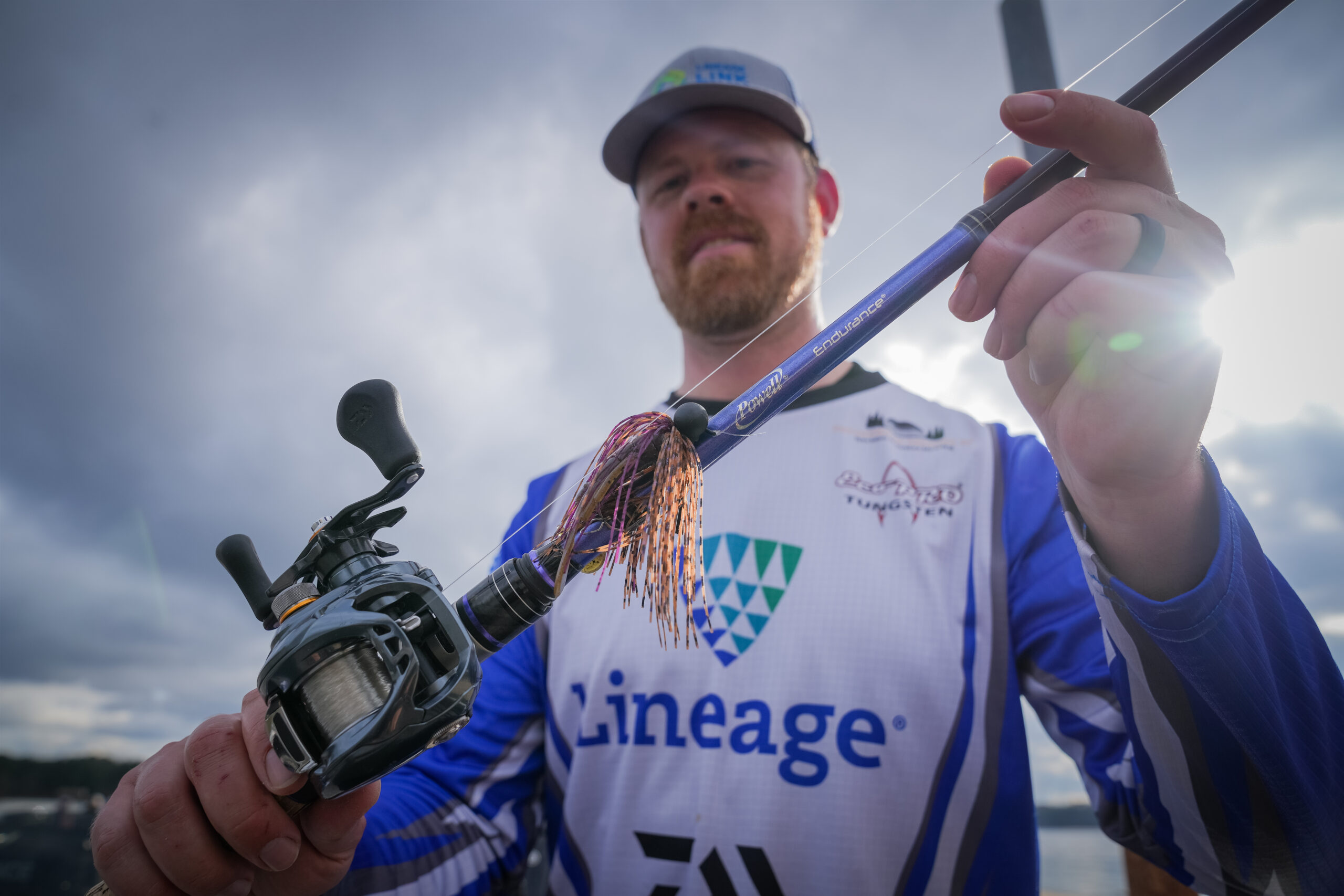
One of many top finishers to do well on offshore targets, Troy Stokes caught a big bag on Day 1 to get in the hunt.
His primary bait was a 1/2-ounce, PB&J Eco Pro Tungsten Heavyweight Football Jig with a watermelon candy Zoom UltraVibe Speed Craw. He threw the jig with 15-pound P-Line fluorocarbon and used a Daiwa Tatula SV TW reel.
“I was pretty much just dragging it on rocks and fishing it around some sticks and brush piles,” Stokes said.
10. Neko in brush also works for Thompson

Pennsylvania rookie Ken Thompson earned his first check on the Invitationals with a spinning rod, targeting brush mid-lake for spotted bass and above the bridges for largemouth.
Though he caught fish on a jerkbait and a Damiki, his primary weapon was a Neko with a Berkley PowerBait Bottom Hopper, either a 1/16- or 3/32-ounce weight, an Owner hook and VMC Crossover Rings.
“I had to use a ring so the hook would sit upright,” Thompson said. “It came through the cover so much better; with the ring you could get it through the brush a lot more often.”
The Neko and brush was a great combination at West Point, and Thompson got on it early.
“In practice, Brody Campbell and I figured out that deal right away, in the first two hours,” he said. “We kept trying to catch largemouth, going to the bank, and you’d fish for two hours and you might catch one. Every time you pulled out to the brush, you’d catch a fish almost every time you found a good brush pile.”